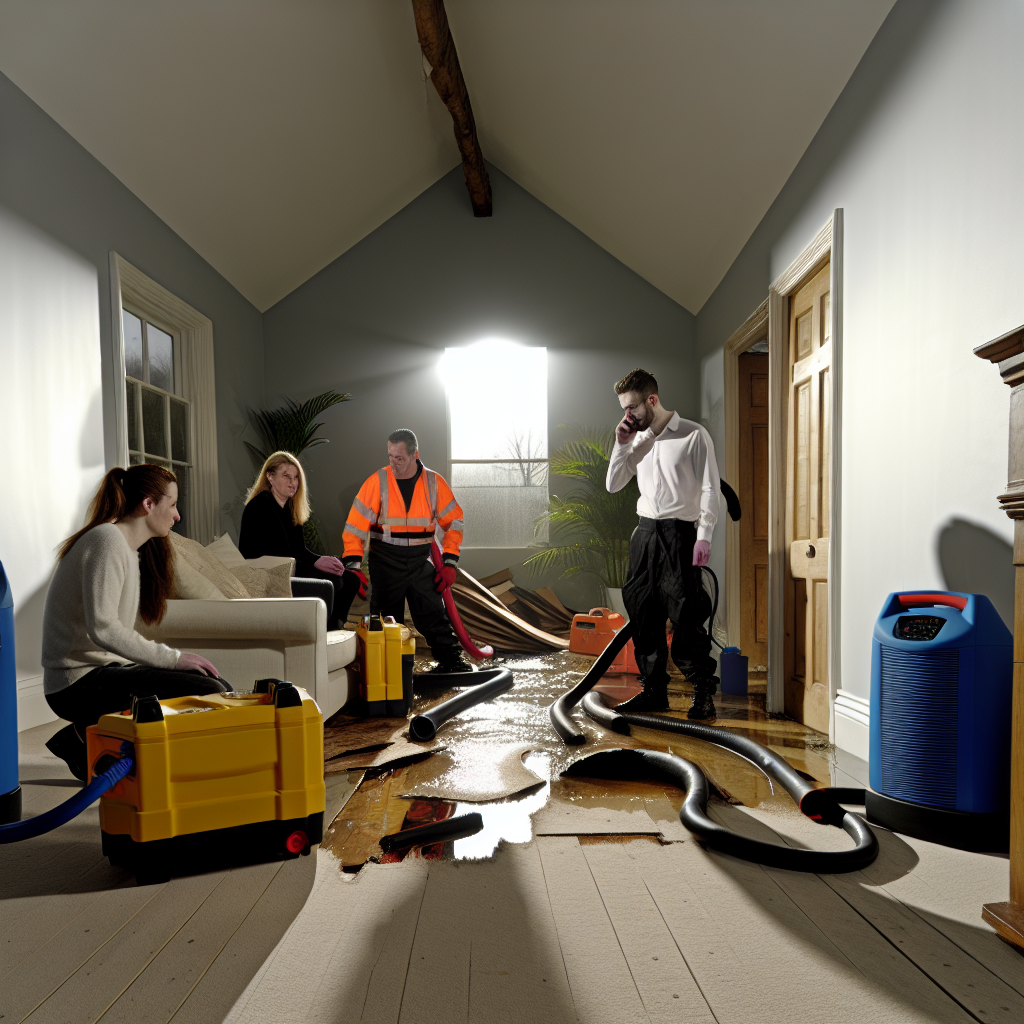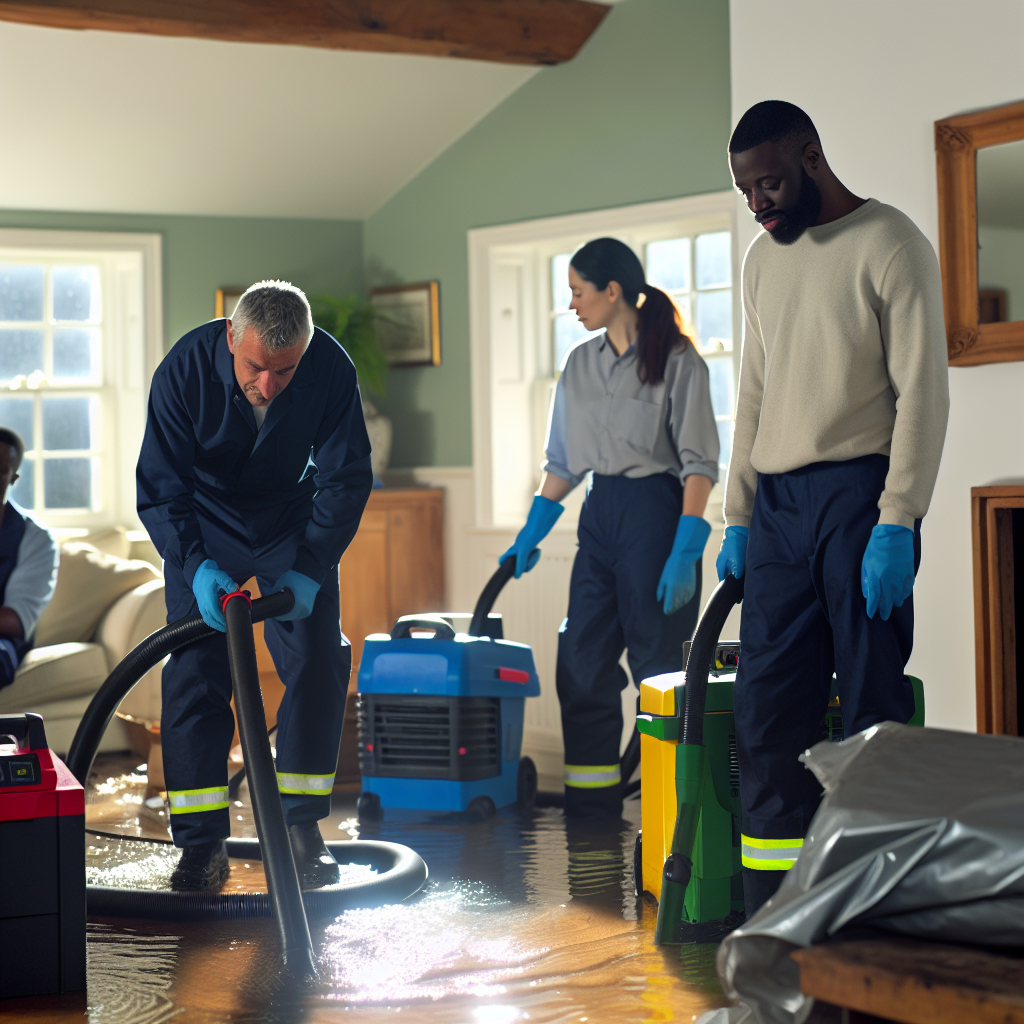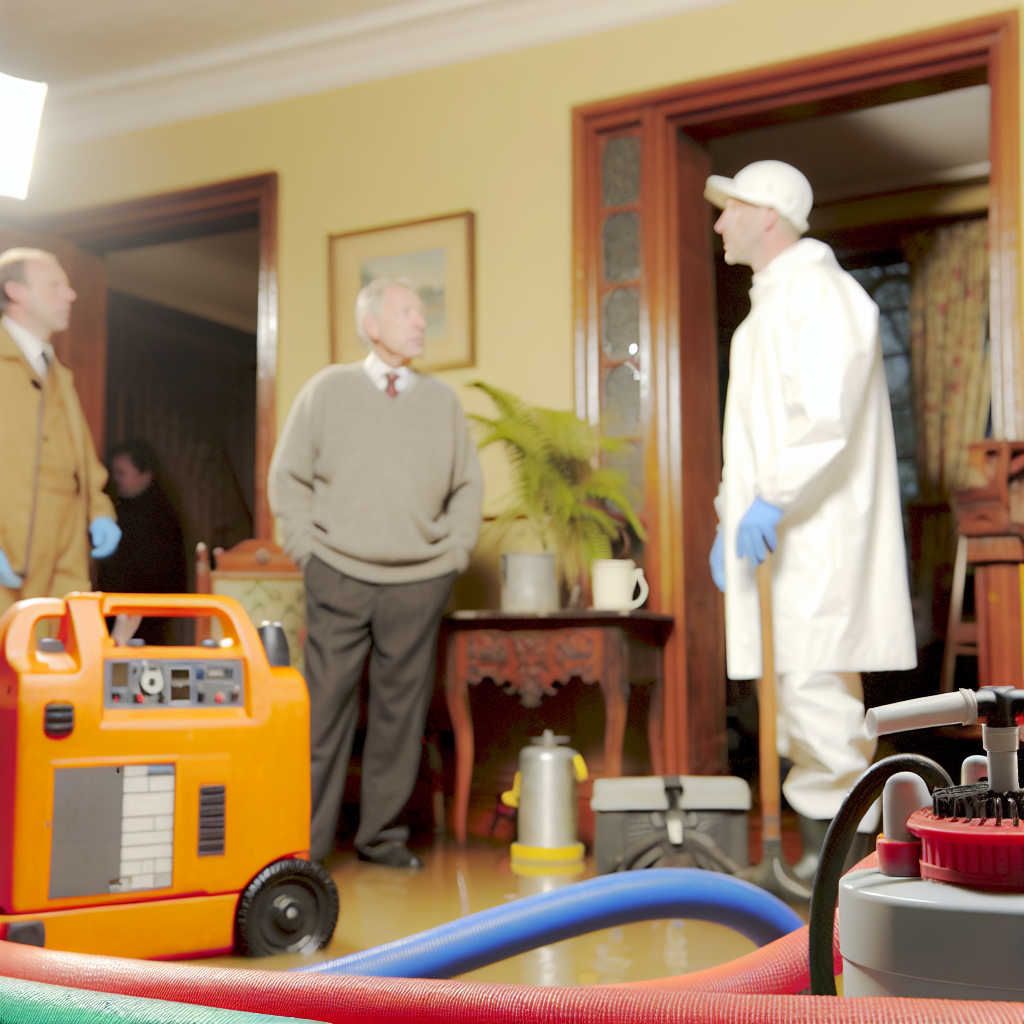Introduction
Flooding is a common and devastating occurrence in the UK; it’s not just the immediate water ingress that causes problems but also the aftermath of flood damage can be a monumental task to tackle successfully. This guide provides key insights on the most effective flood damage cleanup techniques and outlines a strategy for successful insurance claims to alleviate the financial burden. Whether you’re a homeowner who has experienced a challenge due to flooding or want to be well-prepared, this comprehensive guide is for you.
Understanding the Magnitude and Implications of Flood Damage
The physical and financial repercussions of flooding are far-reaching. According to the UK’s Environment Agency, an average of 5.2 million properties in England, or one in six properties, are at risk of flooding[1]. According to an analysis by the Association of British Insurers (ABI), the average domestic flood claim is about £50,000[2].
Beyond these statistics, structural damage to properties, potential harm to electrical systems, harmful mould growth, and contamination of living spaces all contribute to the nightmare of flood damage.
Effective Cleanup Techniques After a Flood
Cleaning up after a flood involves a strategic process beginning with the removal of the water. Specialist tools such as submersible pumps or wet/dry vacuums can assist in removing excess water. Thereafter, dehumidifiers and fans can expedite the drying process.
Next, remove damaged items and thoroughly clean all surfaces with a disinfectant to eliminate any harmful bacteria[3]. These standard procedures were affirmed by Professional Cleaners UK who stated, “It’s crucial to ensure thorough and efficient cleaning post-flooding to mitigate any long-term damages and health risks” [4].
Flood Damage Insurance Claim Strategies
Navigating an insurance claim after flooding can be quite a task. The Association of British Insurers recommends notifying your insurance provider as soon as possible. Taking photographs of the damage to your property and contents for later reference may also help expedite the claim process[5].
Make sure you know the extent of your coverage, and be aware of any excess that applies to your policy. Hiring an expert to assist can be beneficial in complicated cases, as they can provide an unbiased third-party assessment of the damages.
UK Regulations and Standards for Flood Cleanup
Standards and guidelines exist to ensure properties are safely restored to their pre-flooding state. The British Damage Management Association provides a comprehensive set of standards for the damage management sector[6]. This includes procedures for health and safety, waste management, sanitization, drying, and other vital aspects. It can be crucial to be aware of such regulations to ensure the process is in compliant with the industry standards.
Frequently Asked Questions
What is the first step to take immediately after a flood?
What equipment is necessary for a DIY flood cleanup?
How long does it take for a property to dry after a flood?
What should I look for in a professional flood restoration service?
How can I appeal a rejected insurance claim?
Conclusion
Flooding can be catastrophic for any homeowner. By understanding the implications, knowing the effective techniques for cleanup, and being prepared to navigate the insurance claim process, disaster can be managed more effectively. Remember to abide by the set UK regulations and standards for cleanup and consider seeking help from professionals if the task seems too daunting. Staying informed and prepared is key in handling flood damage as efficiently as possible.
References
[1] Environment Agency. (2018). “Flooding in England: A National Assessment of Flood Risk”. Link
[2] Association of British Insurers. (2022). “UK Insurance and Long-Term Savings Key Facts”. Link
[3] Floodlist. (2019). “After a Flood: The Dangers and Health Risks”. Link
[4] Professional Cleaners UK. (2020). “How to Clean up After a Flood”. Link
[5] UK Gov. (2022). “Making an Insurance Claim”. Link
[6] British Damage Management Association. (2020). “Standards and Regulations”. Link




